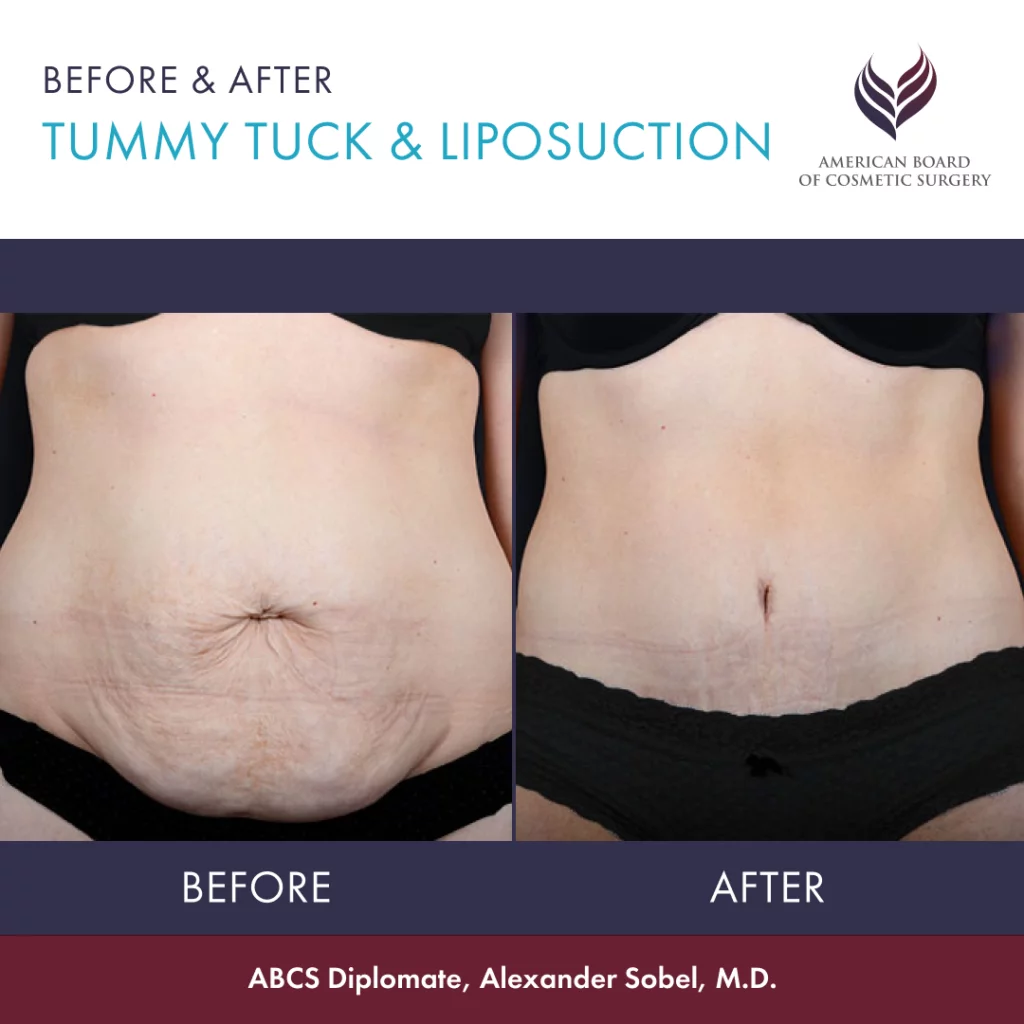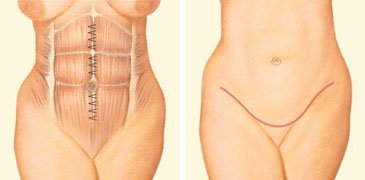The Complete Overview to Recuperation Complying With a Belly Tuck
Recovering from a tummy tuck calls for cautious interest to detail and self-care. As you navigate this healing trip, it's vital to show on not just prompt treatment but also lasting strategies for keeping your outcomes.
Comprehending the Belly Put Treatment
An abdominoplasty, or abdominoplasty, is a surgery developed to get rid of excess skin and fat from your abdomen while tightening up the underlying muscle mass. This treatment can aid you achieve a flatter and more toned abdominal account, particularly after significant weight reduction or pregnancy.
Throughout the surgical treatment, your doctor makes a laceration along the lower abdominal area, allowing access to tighten up the stomach muscles and eliminate any excess cells. You'll often have a follow-up examination to discuss your assumptions and goals. Tummy Tuck Surgeon. It's necessary to pick a board-certified cosmetic surgeon that has extensive experience with tummy tucks
Before the surgical procedure, you'll need to prepare by following your surgeon's pre-operative instructions, which may include staying clear of specific drugs and organizing for post-operative aid. Understanding the treatment and what to expect can aid you really feel more prepared and positive as you move on with your tummy put journey.
Immediate Post-Operative Care
After your abdominoplasty, prompt post-operative care is important for a smooth healing. You'll require to focus on pain monitoring, comply with wound care instructions, and abide by task constraints. Recognizing these guidelines will certainly aid you navigate the very early days of healing effectively.
Pain Administration Techniques
While you may expect some pain after a stomach tuck, efficient discomfort administration methods can greatly ease your recuperation. Your surgeon will likely recommend pain drugs to help manage your discomfort. Remember to relax as much as possible and avoid difficult tasks that might lead to enhanced discomfort.
Wound Treatment Directions
To ensure a smooth recuperation, it's important to follow your surgeon's injury treatment guidelines carefully. Maintain your lacerations clean and dry; gently wash the area with mild soap and water, then pat it dry with a clean towel. Prevent saturating in baths or swimming pools until your doctor gives you the thumbs-up. Adjustment your dressings as advised, and always wash your hands before touching the medical website. Watch for any signs of infection, like increased redness, swelling, or discharge. If you observe anything unusual, do not be reluctant to call your specialist. Finally, resist need to select at scabs or pull on stitches; this can cause issues and prolong your recovery process.
Activity Constraints Guidelines
As you recuperate from your belly put, it's crucial to adhere to particular task constraints to safeguard the finest healing. Listen to your body; if you experience pain or discomfort, quit right away. Prioritizing rest currently will aid safeguard a smooth recuperation and effective results.
Managing Pain and Pain
After a tummy put, taking care of pain and pain is essential for a smooth healing. Your surgeon will certainly suggest pain medication to assist control pain, so make certain to take it as routed - Best Tummy Tuck In Austin.
Making use of ice packs on the affected areas can additionally supply alleviation. This can help minimize pressure on your abdominal area.
Keep moistened and follow a light, healthy diet plan to support healing. If your discomfort worsens or does not improve, don't hesitate to connect to your surgeon for guidance. Prioritizing your convenience will certainly aid in your overall healing.
Dealing With Swelling and Bruising
While swelling and bruising prevail after an abdominoplasty, there work methods to take care of these negative effects. First, keep your body elevated, particularly throughout the very first couple of days. This setting aids decrease swelling by promoting better circulation. Applying cold compresses to the affected areas can also reduce discomfort and reduce bruising. Remember to cover ice in a cloth-- never ever use it straight to your skin.
Remaining moisturized is necessary as well; drinking plenty of water sustains your body's healing procedure. You could take into consideration wearing a compression garment as suggested by your surgeon. This garment can aid regulate swelling and supply support to your abdomen.
Last but not least, prevent arduous activities and extreme movement throughout your preliminary recovery period. By following these ideas, you can considerably decrease swelling and wounding, making your healing smoother and much more comfy. Constantly consult your doctor if you have worries about your recuperation progress.
Resuming Daily Tasks
As you begin your recovery, it's crucial to progressively raise your task degree. Pay focus to your body and use discomfort monitoring approaches to stay comfy. Paying attention to your body will help you find the ideal balance between remainder and motion.
Progressive Activity Increase
Once you have actually gotten to the initial healing phase following your stomach tuck, you can start to progressively increase your activity degrees. Begin with light tasks, like brief strolls around your home, which can promote flow and aid recuperation. Listen to your body; if you really feel any pain, reduce down or take a break. As you get strength, you can incorporate a lot more activities, such as gentle extending or light house jobs, but prevent hefty training or strenuous exercises for at the very least a few weeks. It is very important to maintain a balance between remaining active and enabling your body the rest it needs. Remember, each individual's recuperation timeline is different, so be person and consult your surgeon if you have any issues (Tummy Tuck In Austin Texas). additional hints
Discomfort Administration Techniques
To efficiently take care of pain as basics you return to day-to-day tasks after a tummy put, it's important to remain proactive regarding your comfort. Beginning by taking any type of suggested medications on schedule, also if you don't really feel much discomfort. Utilize ice packs on the impacted locations for short intervals, as this can lower swelling and numb pain.
Paying attention to Your Body
Paying interest to your body signals is crucial as you start resuming day-to-day tasks after a belly put. Pay attention very closely to what your body's telling you-- if you really feel discomfort or pain, it's a sign to reduce down. Remaining eating and moisturized well can additionally sustain your healing.
Nourishment and Hydration Throughout Healing
As you recover from a tummy put, appropriate nutrition and hydration play essential functions in your healing procedure. Foods like poultry, quinoa, leafy, and fish greens supply the minerals and vitamins necessary for recuperation.

Avoid refined foods, too much sugar, and alcohol, as these can prevent your recovery. By focusing on nutrition and hydration, you'll sustain your body's healing process and set the structure for long-lasting health post-surgery.
Long-Term Upkeep of Results
After you have actually focused on nutrition and hydration throughout your healing, maintaining the results of your belly tuck comes to be a key focus. To keep your results looking their ideal, regular workout is crucial. Goal for a mix of cardio and strength training to increase metabolic rate and build core stamina.
Additionally, preserving a balanced diet plan abundant in whole foods will certainly sustain your total health and assistance avoid weight variations. Avoiding processed foods and sweet snacks can likewise assist you remain on track.
Don't fail to remember the importance of hydration; it plays a fundamental role in skin elasticity and total look.
Lastly, think about organizing follow-up appointments with your cosmetic surgeon to monitor your progression and address any kind of worries. By committing to these behaviors, you'll enhance and protect the stunning results of your abdominoplasty, permitting you to appreciate your new appearance for years to come.
Regularly Asked Inquiries
Exactly How Much Weight Can I Securely Lift After a Tummy Put?
After your abdominoplasty, you should not raise anything heavier than 10 extra pounds for at the very least 6 weeks. Pay attention to your body, and if it really feels as well heavy, it's best to wait a bit much longer.
When Can I Go Back To Function After My Surgical Treatment?
You can typically return to work within 2 to 4 weeks after surgical treatment, here depending on your work's physical needs. Listen to your body and follow your medical professional's advice to assure a smooth healing.
Are There Any Particular Exercises to Prevent Throughout Healing?
Throughout recuperation, you should avoid high-impact workouts, heavy training, and any kind of motions that strain your abdominal area. Concentrate on mild activities like walking to advertise flow, but constantly listen to your body and consult your physician.
Just How Long Will I Have to Use Compression Garments?

You'll usually need to use compression garments for about four to 6 weeks after surgery. They help lower swelling and support your healing procedure, so do not skip using them for excellent results.
Can I Travel by Plane Soon After My Abdominoplasty?
You can take a trip by airplane quickly after surgery, however it's best to wait at least a number of weeks. Always consult your physician initially to assure you await the journey and any kind of prospective complications.
The Complete Overview to Recuperation Adhering To a Belly Tuck
After your belly tuck, instant post-operative treatment is necessary for a smooth recovery.While you might anticipate some pain after a tummy tuck, reliable discomfort management methods can greatly alleviate your recovery.After a tummy put, managing pain and discomfort is necessary for a smooth recovery.After you have actually focused on nourishment and hydration during your healing, keeping the outcomes of your belly put comes to be an essential focus.
Comments on “Comparing Clinics for the Best Tummy Tuck Austin Texas: A Patient’s Checklist”